When I decided to cycle alone across Iran I was not an experienced cyclist. I still am not. I’m not particularly fit, I struggle to go up hills, and I’m known for my appalling sense of direction. I suck at fixing punctures. But I’m also very stubborn, and find it hard to let go of an idea, when it happens to pop into my head. And I feel embarrassed if I tell someone I’m going to do something and then I don’t do it. So when I told a friend that I was going to cycle in Iran (it was more a case of thinking out loud), I kind of dug my own grave right there and then.
Sometime after this idea burrowed itself inside my head, I moved to China, to save money working as an English teacher. I bought the cheapest bicycle I could find and started going everywhere with it. On the few holidays I had, I went out into nature and camped alone. I figured I’d have to do it quite often, and China felt like the safest place to practice. I slept on the top of a mountain, on a tiny island off the coast of northern Fujian, and on the beach of Kinmen (a Taiwanese island that is a ferry ride away from the city I lived in). By the end of it I was still scared of camping alone, and my cheap, gearless bike hadn’t prepared me for long distances or cycling uphill.
I’d travelled to Iran before, so it was not like I was going in blind, but this form of transport brought many doubts. And my doubts took on epic and, at times, ridiculous proportions. Being a woman, CAN I cycle? Where can I buy a bike? Which bike? Are there bikes? What should I pack? Which roads can I take? Where do I sleep between cities? Can I wear a helmet over my hijab?
So, what I’m serving here is an absolutely basic guide for cycling in Iran, from someone who knows very little about cycling. A sort of “Cycling in Iran for Dummies”, but written by a dummy.
First off:
Buying a Bicycle
Tehran is a city of over 12 million people, so of course there are plenty of bikes. A mountain of them. All kinds of them. There’s whole streets full of shops that just sell bikes. But if you want to avoid bumps on the road later on, go to a reputable shop. My good fortune brought me Moein, a couchsurfer host who was also passionate about cycling. I honestly don’t know what I would have done without him. He took me to the official Giant store, and we found the ride that would later be known as Coco. She was an extra small ladies’ hybrid bicycle, with V brakes and enough spokes on the wheels to handle the extra weight of my bags. I fitted it with the sturdiest rack that they had, bought a helmet and a small pump, and they offered me an extra inner tube. I’ll add a “don’t do what I did” nugget here: get more inner tubes. Because you’re shit at fixing punctures too, right? And, unless you have 26” wheels, you won’t find inner tubes that fit your bike in the middle of nowhere.
What to Pack
There’s really nothing special you need to pack. Just bring as little as possible. I had one riding outfit, and one non-riding outfit. I didn’t bring any cooking implements, didn’t have a first aid kit, and didn’t even have a pair of flip-flops. I had a tent and a sleeping bag, and I did bring a compact inflatable mattress and pillow. And baby rash cream, for obvious reasons.
Moving on to:
Being a Woman Cycling Alone in Iran
(only applicable to females)
So this is what I found out. Yes, it is technically illegal for women to cycle in cities. But I also found out that the question you should ask in Iran, more often than not (and this applies to many many things) is not if it is illegal, but if it is possible. And it is possible. Due to Iranians’ famous hospitality, you can get away with a lot more by being a foreigner (and hence, a guest). Whenever I would ask if my shirt sleeves were long enough, if my tunic covered enough of my thighs, I would often get a “it’s ok, you’re a foreigner”. You do, however have to wear hijab (scarf on your head, long-ish sleeves and a long-ish tunic). Men can’t wear shorts, and should avoid those tight lycra cycling leggings. From what Iranian cyclists told me, the only city you should avoid is Qom, where they have detained foreign female cyclists. I had absolutely no problems, and the policemen I found along the way were nothing but kind to me (one time I was even offered a police escort to the next town, and had to convince them that I didn’t need it).
Despite the hardships, I still met a few Iranian women cycling. In the south, I met Fatemeh, who had travelled from Kerman to Bandar Abbas, following the same road as I did. My friend Moein’s cycling group had a few women in it. And I even bumped into a young lady in the middle of the insane Teherani traffic. We definitely had a sisterly bonding moment there.
On the road people were incredibly sweet to me, too. At one point, I stopped pretty much buying food, because people would just stop their cars and give me food. So much food. I’m pretty sure I ate my bodyweight in dates. I don’t think I’ve ever eaten as many pistachios as on the road in Iran. One guy saw me eating outside a roadside food shop and opened his restaurant just so that he could feed me kebabs and introduce me to his family. And even when people didn’t stop to give me food, they would honk their horns, young girls in the back of cars would clap and cheer me and old ladies would wave and smile when they overtook me on the road. It still warms my heart to remember it.
I did, however, experience some unwanted attention too, although it was much rarer, and I never really felt scared. Mostly annoyed, sometimes properly angry. The most common (and to be honest, baffling) annoyance was being overtaken by boys on motorcycles who would yell at the top of their lungs, right in my ears. I never understood the reason why, but young men do tend to be the silliest of all demographics, and that is a truth universally acknowledged. Maybe it was their way to show support? On very rare occasions (maybe 2 or 3 times) one of the boys would try to engage in conversation with me by yelling “HOW ARE YOU I’M FINE THANK YOU I LOVE YOU!” and try to grab my arm. Sometimes a stern word would be enough to make them go on their way, but one time they kept chatting (“HOW ARE YOU I’M FINE THANK YOU I LOVE YOU!”) until a man on a motorbike stopped them and shooed them away, apologizing and calling them “diwane” (crazy). And there was that one time when a guy stopped his pick up truck and offered to pay me for sex. With his very young daughter next to him. I got very angry, so he shrugged and left. I can go a bit mental when I get angry, so in a way, I admired his poise and calmness.
So, yeah, some weird stuff might happen if you travel alone, and you should expect some colourful characters. But I found Iran very safe, specially because I always felt that, if there was any trouble, people would go out of their way to help me. And they did, so many times.
But, what about the roads? Well…
Cycling in Iran
Before this trip, I lived in China. So, in a way, I was already used to cycling without rules. Which means that if, for example, you want to take a road you’re not supposed to, you can do it. Or cycle on the pavement if you’re stuck in the hellish Asian traffic. Now that I’m In Europe, I miss all the options that I no longer have. But having all these options also means that you have to watch out for vehicles coming from all sides, at all times. In Tehran the traffic is particularly chaotic, since there are over 12 million people in the city, and they all seem to be on the road at the same time. The motorcycles are particularly unpredictable, and you just have to trust that, when they weave through the street around you, they know what they’re doing. There’s also a bunch of huge highway-like roads around the city, and traffic there is fierce and scary. The city isn’t really built with bicycles in mind, so sometimes you can’t really avoid them and you just have to power through it and hope for the best.
Between cities, you can pretty much take any road you want. Really, any road at all. I rode on the hard shoulder of major highways for hundreds and hundreds of kilometres. They tend to be less steep than smaller roads, are well maintained, and avoid big mountains. But you’ll share the road with the ruthless Iranian truck drivers, and get to be very familiar with that push and pull as the passing of the truck pushes you out of the road, then pulls you back in (it’s the Venturi effect, right?). And the hard shoulder will eventually fail you when you most need it, i.e. when you have a dozen trucks that want to overtake you at full speed. At some points I had to admit defeat and pull over or just drive my bike into the gravel and sort of fall over.
Fun times though.
It’s getting dark. What do I do?
Where to Sleep
This is one of the things that makes Iran a great place to cycle in. They’ll let you sleep in the town park. It usually has a guard that stays in a little house inside the park, so I always felt safe. I did always sleep with a knife under my pillow, even though it would most likely be useless if anyone attacked me. But it was like a comfort blanket, so don’t judge me. One time, when I was travelling in the north of the country, the police didn’t let me sleep in the park because it was in the outskirts of the town and there were wolves (in Mazandaran and Gilan I was warned frequently about wolves) so they took me to a place I later found out to be the “Shahrdàri”, or Town Hall. Sometimes they’ll have small apartments that they probably use for visiting officials. But, thanks to that already mentioned and legendary Iranian hospitality, there’s a good chance they might host you there. So memorise this word, it might bring you a warm place, and a breakfast in the morning with the people who work there. In my case it also brought a group of school girls that wanted to ride my bicycle, and a tour around town with a teacher and an accountant.
Another important name to remember is “Helal Ahmar”, which is Persian for “Red Crescent”. My first contact with them was when I found myself pushing my bike up a never-ending hill in the pouring rain, with barely any hard shoulder to protect me from traffic. They stopped their ambulance and made me put my bike in the back (yes, the place where they put patients) and took me to their headquarters. They even let me turn on the siren on the ambulance for a bit, which was VERY exciting. There, they fed me, let me dry my clothes and rest, and made sure I had a place to stay in the town I was heading to, (I ended up staying at the house of the mayor). If you’re a woman, you cannot sleep inside a Red Cross headquarters (they are all men, so it would be highly inappropriate), but they’ll let you camp outside and even have a shower. And they’re the funniest and most entertaining bunch of guys you’ll ever meet.
Couchsurfing is also very popular in Iran, and I had great experiences staying with wonderful families, and eating seriously delicious food. You’ll soon learn the meaning of “bohor, bohor!” because you’ll hear it so often, because they’ll make you eat as much as possible. When I was in Iran, the government blocked access to Couchsurfing, so you’ll need a VPN to be able to access it (along with Facebook, Twitter and a few more “sensitive” websites and apps).
One other option (actually, an essential) for cyclists is Warmshowers, which basically is a Couchsurfing for cyclists. They’re numerous, very active and incredibly kind. Some of them are English teachers, who’ll invite you to meet their students, and stay with their families. I learnt a lot about dating in Iran by hanging out with these teenagers. Essentially, I learned that it is really difficult to do before you reach university, and it involves an amazing amount of skill and a cunning use of social media.
Finally, chance will most likely bring you an unexpected host. My most memorable host was an old man that gave me a ride on the back of his truck on another stormy day. I asked him if he could take me to a hotel (it was pouring, so there was no chance of camping), and instead, he took me to his home and left me with a group of women who spoke no English, but fed me (bohor, bohor!) and pampered me for the whole time I was there. I didn’t know how to thank them, so I spent the rest of the day helping them shell a huge bag of walnuts, and trying to communicate in pigeon Persian. At the end of the day, after eating another massive meal, they made a bed for me and tucked me in like a baby. I’ve never thought I could feel so close to someone I couldn’t understand.
A minefield of politeness…
Understanding Taaroff
This is a hard one, and I don’t feel like I’ll ever be able to fully understand it. So, taroof is a form of politeness, an intricate system of etiquette whose function is to both demonstrate respect and care, and at the same time, save face. The most basic example of it is the process of refusing when you are offered something. This will enable the people offering to express their willingness to give by insisting that you accept the offer, while allowing the person who receives to not come out as over eager. At the same time, it can also allow the giver to offer something that he/she cannot give without losing face. This practice is both highly choreographed and intuitive. And it can happen between friends and family, but also between strangers. A taxi driver or a shop keeper might insist that you don’t need to pay when, actually, you do. Early in my trip, at a fast food place, the owner refused my money, when I tried to pay for a falafel sandwich, and I only understood much later that he was just being polite, and I should have insisted more to pay (sorry, falafel guy!). It doesn’t help that sometimes insisting just once is not enough.
So, what to do? I read that the best way to assess if an offer is a “real” offer is to consider how much of a burden it is for the giver. Taarof teaches you to try to put yourself in another person’s shoes, and be empathetic. But given the actual enormous generosity and hospitality of Iranians, it’s hard sometimes for a foreigner to get it right. Especially because people will, at times, answer your initial polite refusal with a “don’t do taarof” which can also be part of taarof. So, the lesson to learn here is: you will make mistakes, and you’ll feel awful later. But you’ll get better. And you will (hopefully) become a more generous person in the process.
When I was researching for this trip, I tracked down experienced cyclists on Instagram and Facebook, and asked them if my plan was stupid, if maybe I should plan a shorter trip first. I honestly thought they would all tell me to aim lower and basically stop being silly. No one did that. Everyone was encouraging. And now I know why. Because, really, it’s very simple. You get on your bike, and you just go.
Anita Faria is a video editor and lives in Madrid.
She cycles everywhere but stills struggles with using bike pumps. She is also exceedingly good at napping and procrastinating.
You can see more photos from her travels on her Instagram.

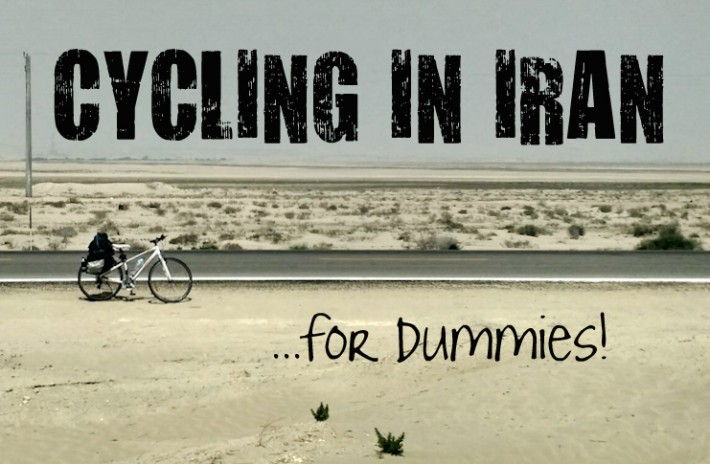
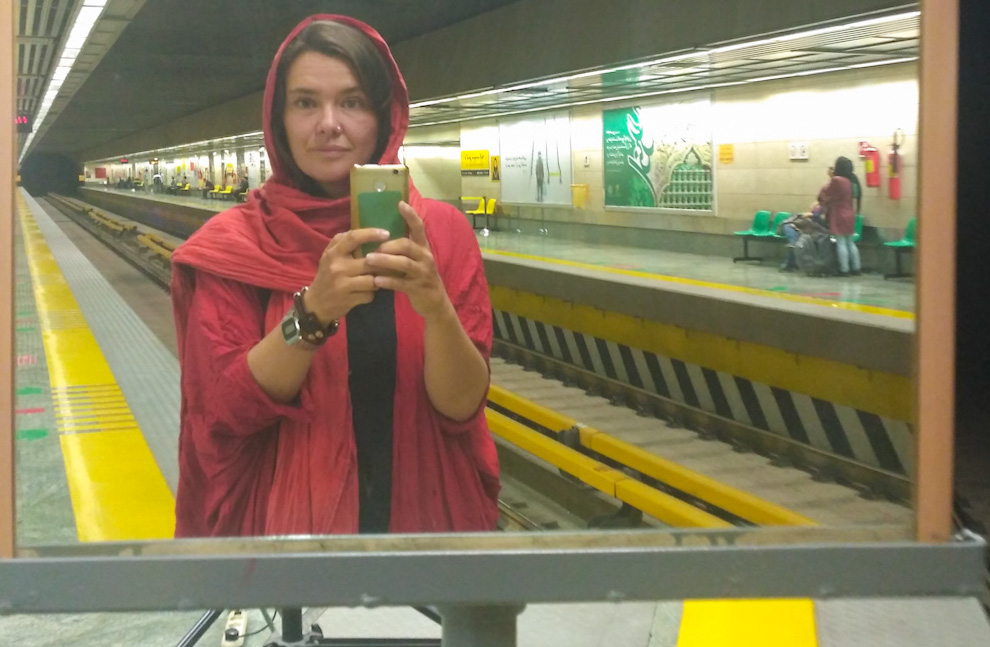
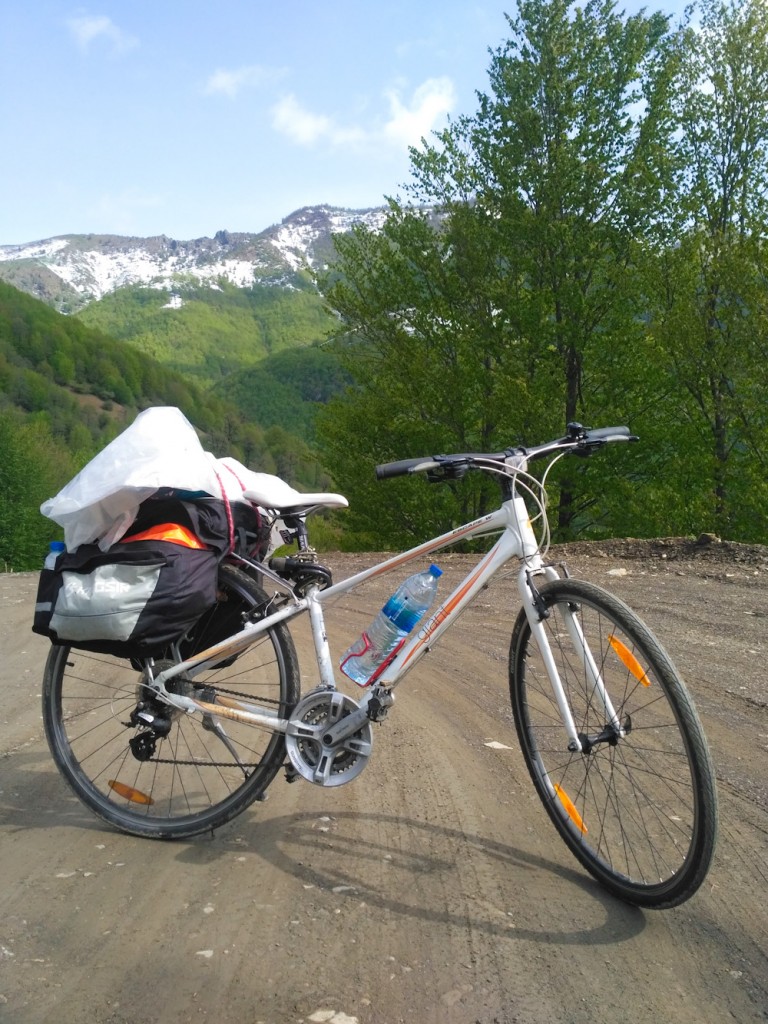
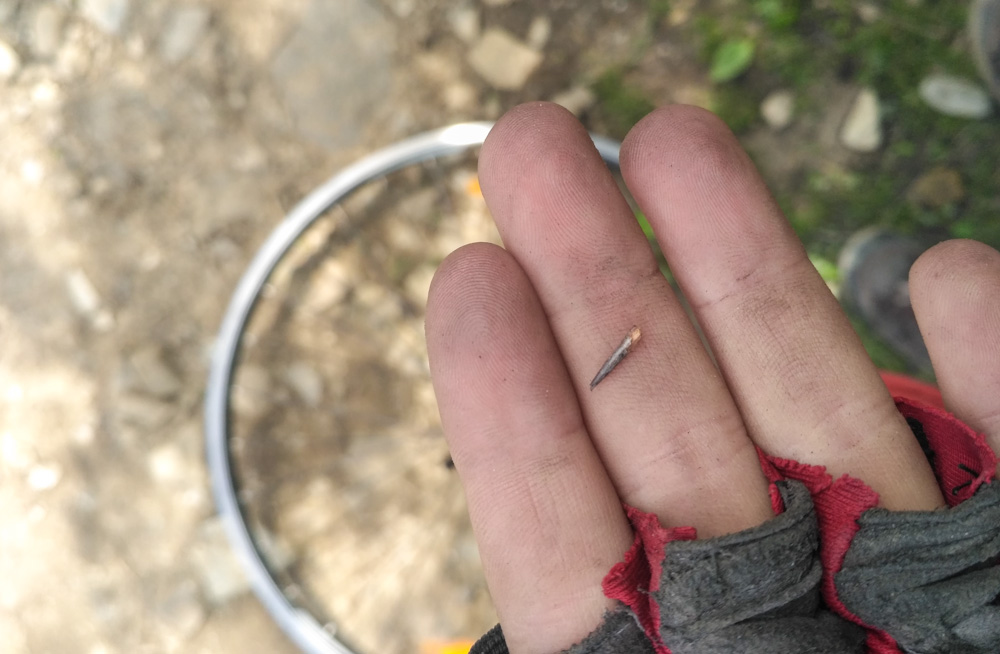
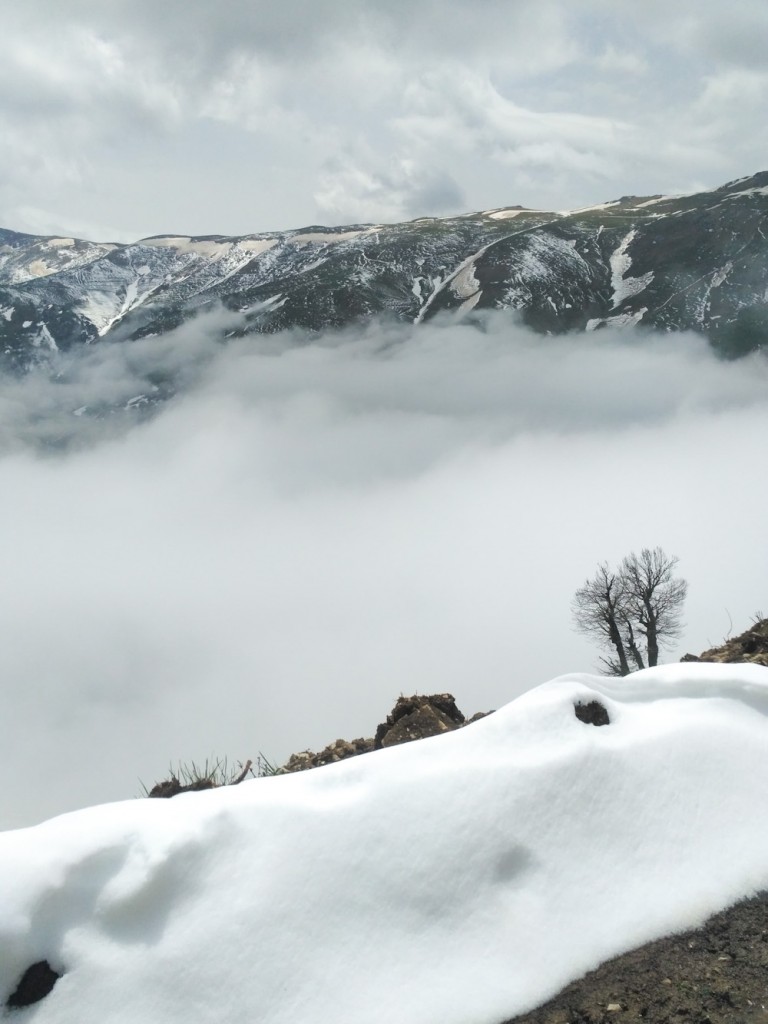
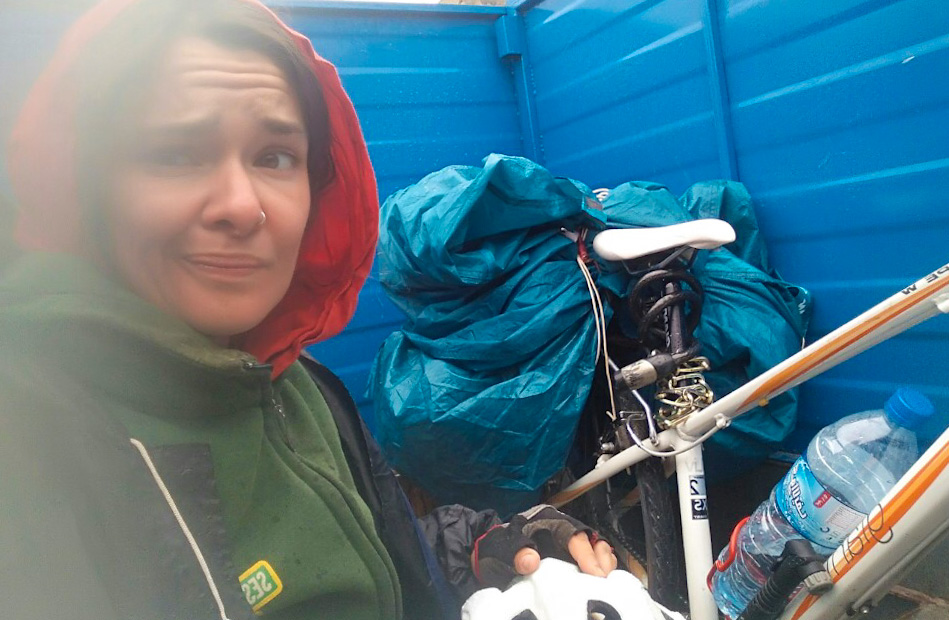
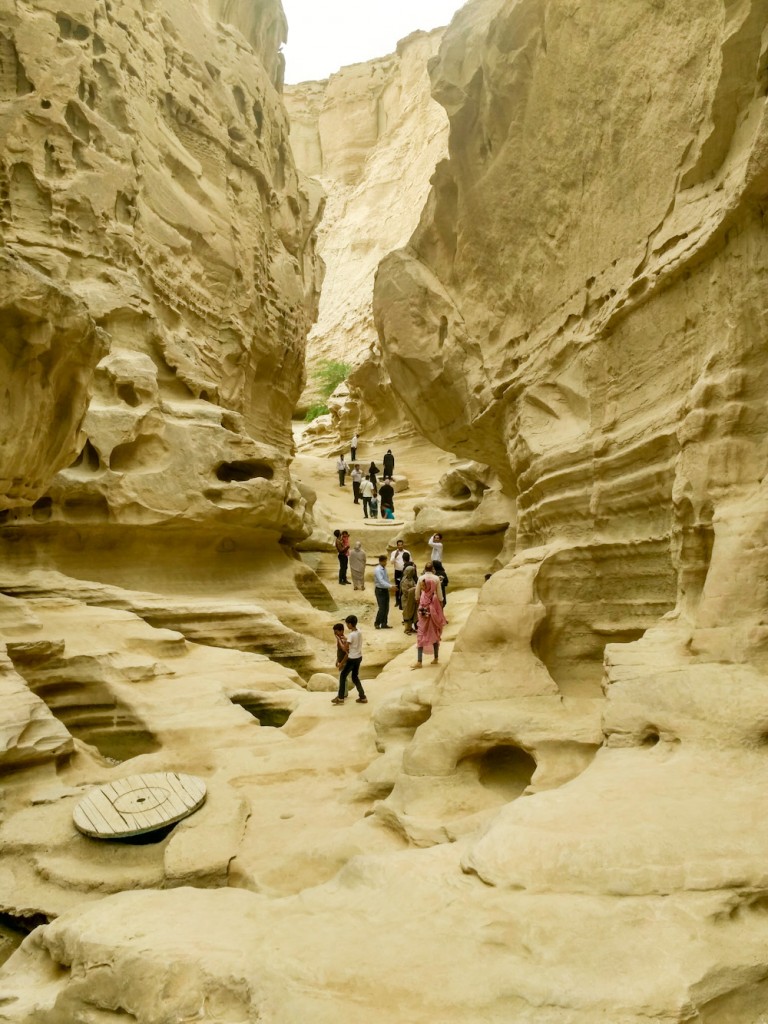
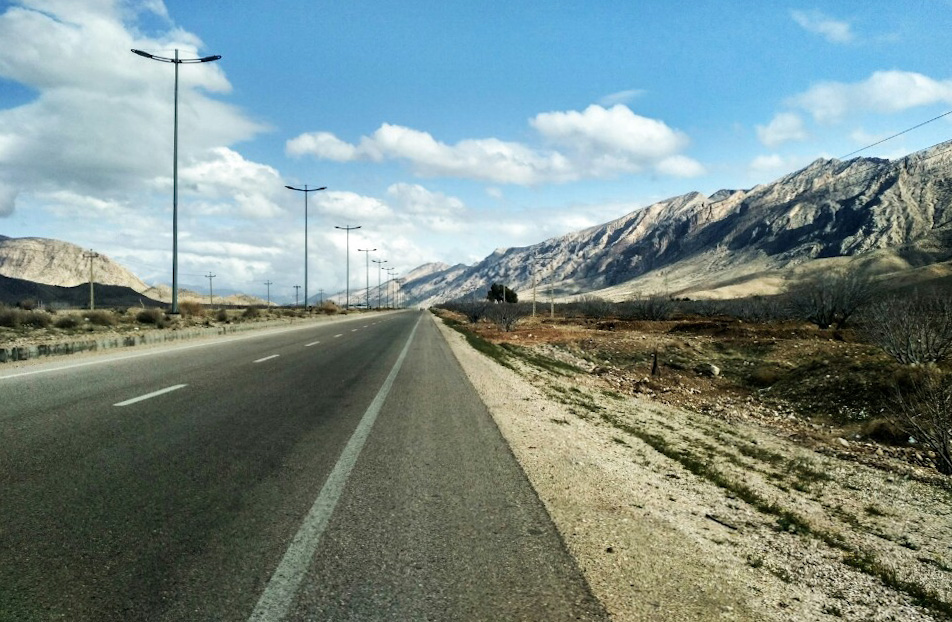
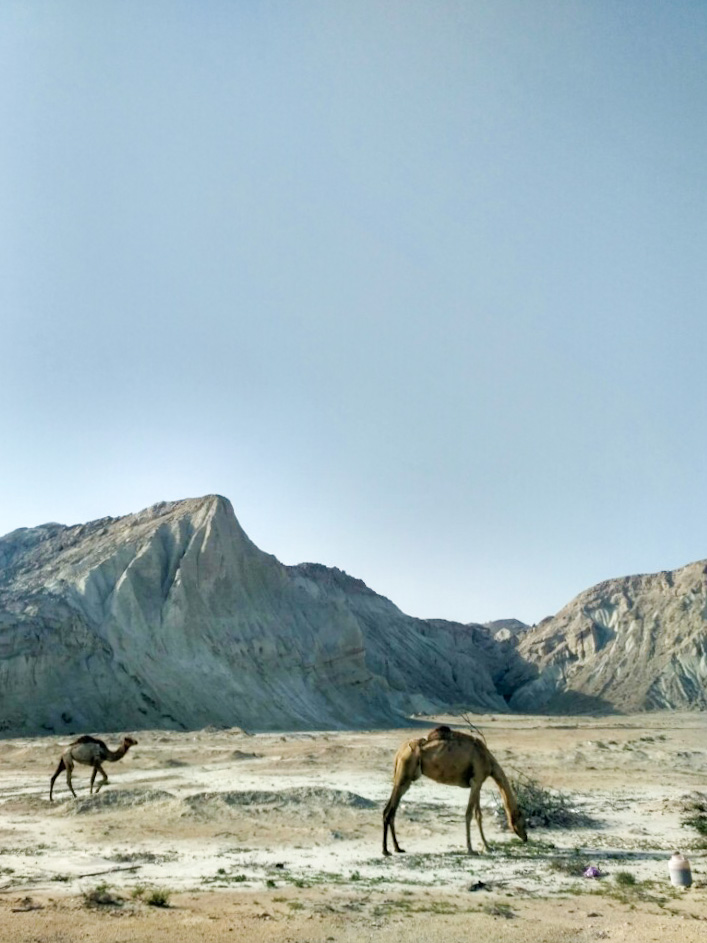

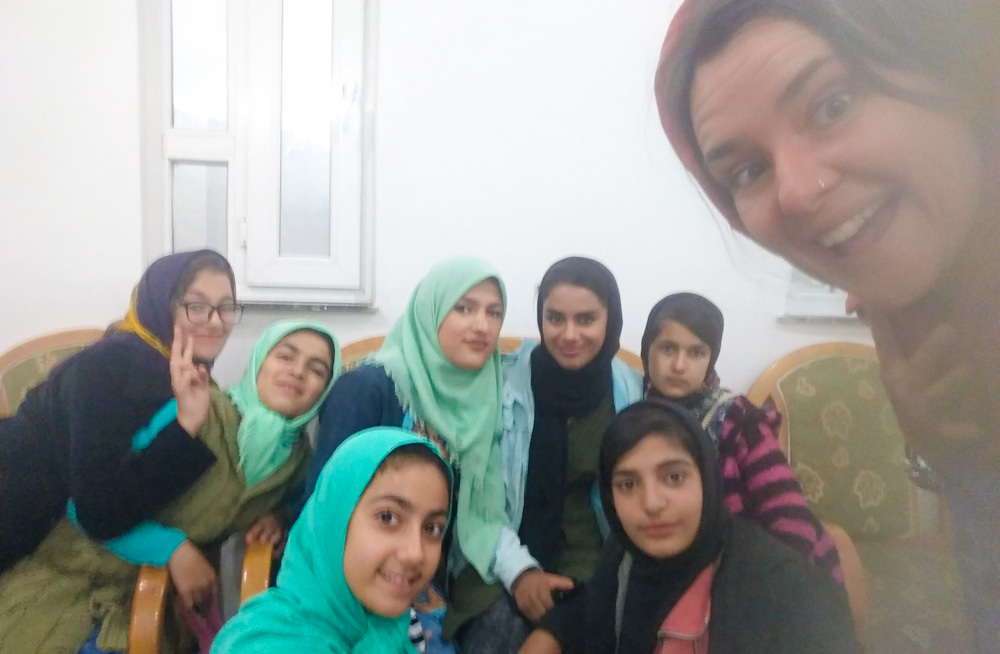
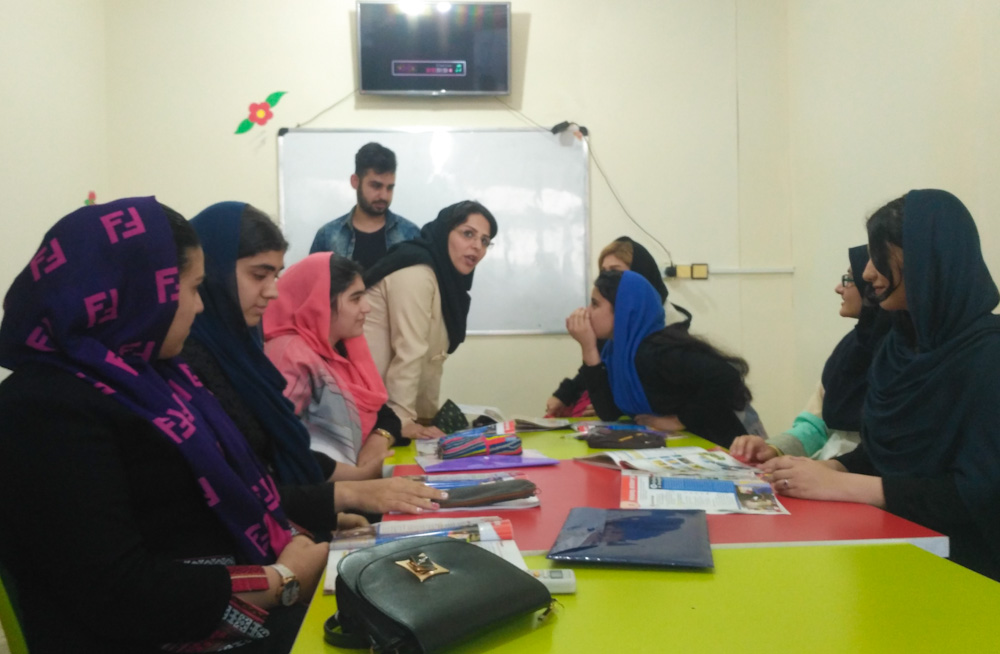
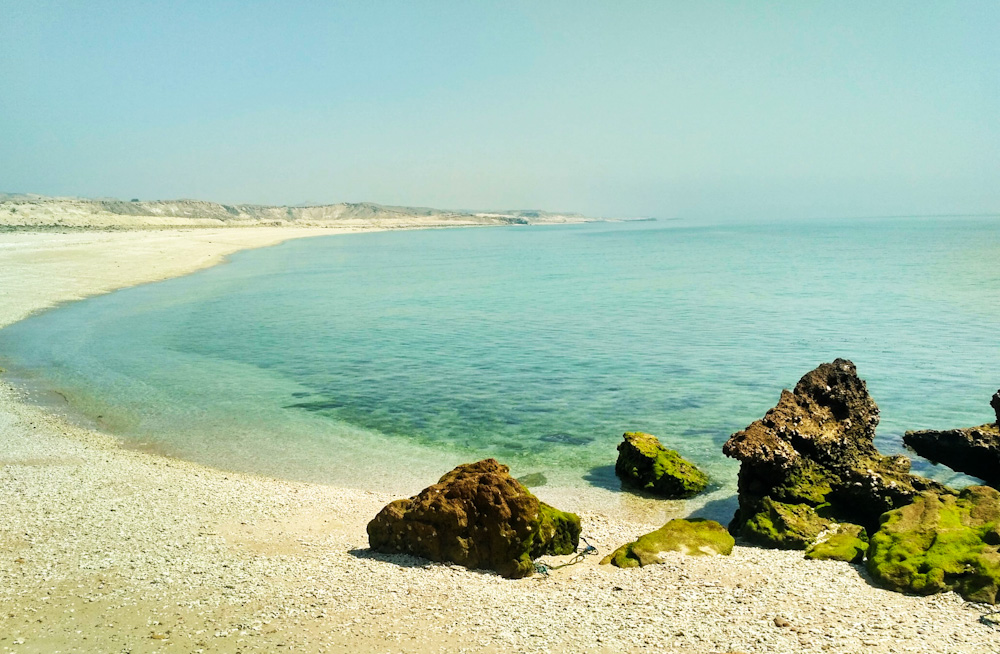
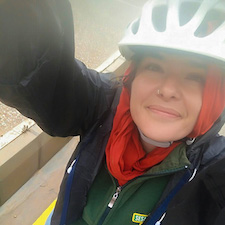
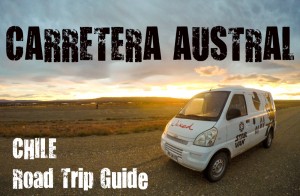
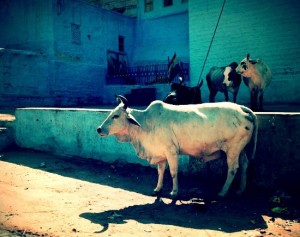
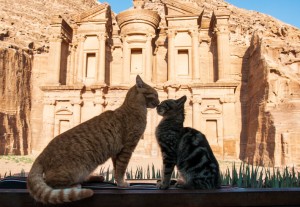
Fantastic stuff.
Iran is a beautiful country with wonderful people and you have shown yet another lovely side of this country.
Cheers,
Rajiv
Ahhh Taarof. It’s a minefield for those who aren’t familiar with it! I don’t mind it, but I know a good number of Iranians who themselves get frustrated with it. Great stories -I would never even think to do something like this!
wonerful piece of work.you travel tale gives me inspiration to visit sooner then planned.keep good work going
Thanks for the entetrtaining tale.
Congrats for your experience and courage. :-)
Wow, Great experience! thank you to share, i hope by reading this more people comes to Iran … me and my team are ready for any helps …
you did not mention the cost to visit iran…please tell me about the cost to stay there so that i can plan my trip…
Sorry for the late reply, but this was a guest post. Cost is a very difficult thing to predict, it really depends on how you travel. I spent very little, maybe like 500 euros for 2 months… But I mostly camped or stayed with hosts and friends. The rial (unfortunately for iranians) keeps going down, which makes it cheaper to travel. I found it to be almost as affordable as India, except if you have to stay in a Hotel in a city that doesn’t have hostels. Then it’s expensive, especially if you are alone, since there’s never a single room. Also, if you want to visit attractions you may have to pay more than a local (like in India) so that’s something to keep in mind.
Does anyone have an uptodate cost for a medium spec road / touring bike bought in Tehran?
Thanks
I would contact warmshowers members from Iran. They might be able to help you. There’s a lot of cycle stores in Tehran, and big brands like Giant and Scott are available.
Hi
Im peyman from iran
Anyone interested in visiting Iran can take advice from me, I am interested in helping you for a good trip in Iran.
Thank you for sharing your experience, It is so helpful
Really enjoyed the story of your Iranian cycle adventure. Enjoy Morocco.
Hi there,
I’m Ewa, solo female cyclist, on the road for 6,5 years already.
I’ve came across your webiste when looking for advice to cycle solo in Iran as a woman. Then I wen there by myslef, it was 2 years ago.
For me Iran was definitely the worst place I have ever cycled. I was attacked twice very seriously, nearly raped, my embassy was involved. I felt insecure and have an impression harrasing women in Iran is osmehow acceptable.
I think encouraging women to cycle Iran is not the best thing to do. Especially south of Iran is where the muslim traditions are so deep, as w woman solo you belong to noone, so they appraoch you.
When I posted on a FB group about my problems a lot of solo female cyclists replied, all of them had similar experiences.
ok, I’ve written a blog post describing my and other women experience. I quoted you as well.
http://www.ewcyna.com/podroz-solo-na-rowerze-przez-iran-doswiadczenia-kobiet-solo-woman-cycling-in-iran-is-it-a-no-no/?lang=en
Last thought – Iran is special and can be great, but either stay in the north and not off the beaten path or find a male companion.
Ewa